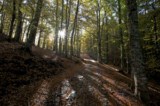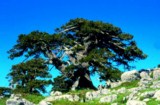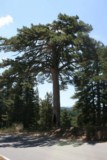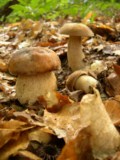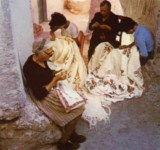|
POLLINO NATIONAL PARK - CALABRIA & BASILICATA - SOUTH ITALY
HOTEL ROOMS ACCOMMODATIONS OFFERS IN POLLINO NATIONAL PARK
WHERE TO EAT WHERE TO HAVE FUN EXCURSIONS SPONSORS
The Pollino National Park is featured by a distinguishing variety of natural
environment that spans from the Mediterranean bushes to great forests of Oaks
and Beeches; from Maples and Whir Firs to the amazing Pines and Rivers of
great ecological significance for the South of Italy. The area is populated by
Deer, Wolves, Foxes and a few barrels of prey such as Hawks, Falcons and
Eagles. In some points it reaches high tops of over 2000 metres and it covers
part of the Province of Potenza and Matera in Basilicata and also part of the
Province of Cosenza in Calabria. So many are it's beauties and features that
attract schools and youngsters to go visit such peaceful and breath-taking
vision of nature and take courses for the discovery of the antique Mills,
Convents, Abbeys, Fortresses and Castles. Agriculture and Stock Breeding, but
also the Craftsman trade are the principal activities of the Park.
Gastronomy
is made up of simple dishes with natural flowers collected from the local
vegetation of the territory.
From the "Campo Tenese" plain, close to the motorway junction that takes the same name, the main road enters to reach the "Ruggiu" plain; close by you will find the "De Gasperi" and the "Fasanelli" refuges that are often starting points of various tours and outings. The Pollino Plains can be reached after an easy excursion on the Impiso Hill, observe the typical Alpine characteristics, surrounded by a natural amphitheatre of extraordinary beauty, that make up to be the heart and the symbol of the Pollino National Park. From here it is possible to admire and to reach the most important summits of the massif: Sierra di Crispo, Sierra delle Ciavole, Mount Pollino and Sierra Dolcedorme, that with their 2266 meters of height are the highest summit of the mountainous complex and of all Calabria. The last magnificent twisted and sturdy "Loricate Pines" able to stand the hardships of the highest peaks can be found on the upper side of the plain, near the "Big Door" of Pollino, that with its predominant and twisted shapes stays tenaciously clung to the inaccessible out crop of rock, representing a fantastic and delicate fight of life and a challenge against the natural elements. From the towns of Civita and San Lorenzo Bellizzi it is possible to reach the most suggestive points of the eastern mountain side: the larger woods of beech trees of Fagosa, the Hill of San Lorenzo with its rocky walls around 800 meters high, which rises directly from the water of the Raganello stream; the Barile and Raganello gorges, rocky canyon run by crystalline water, became one of the most desired tourists destination and hikers, that starting from the Devil's bridge, in the Civita surroundings, climbing the stream bed to discover ravines, cyclopean rocks and marvellous gardens, surrounded by rock walls over 100 metres tall. On the city-states of Cerchiara of Calabria, San Lorenzo Bellizzi and Civita you will find some most interesting speleological areas, like the Bifurto Abyss, with a depth of 683 metres: it is actually classified on the eighteenth position between the deepest abyss of Italy, or the Owl Cave, the biggest in Calabria and in part unexplored; the Ninfee Cave, from where the sulphurous water gushes at 50°, used to thermal care. Those and other marvels are offered by the Pollino, superb guardian of the last edges of a mysterious and wild land, covered with ancient forests, furrowed with very deep valleys, surrounded by marvellous summits, and animated with traditions, rituals and people customs arrived from millenary cultures. |
||||||||




